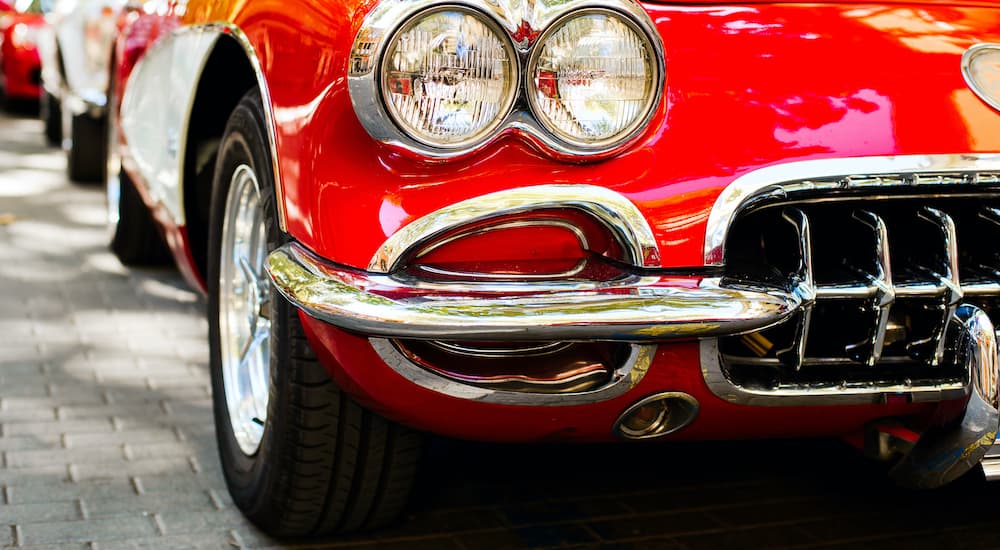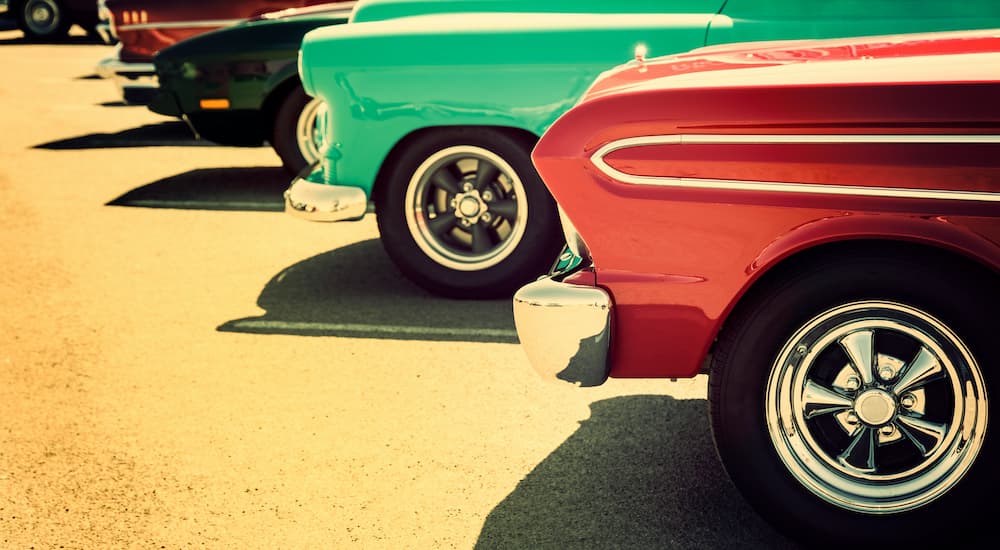When attending a classic car event, it’s fun to think about what it would be like to own one. The nostalgia factor, long drives in the country, and the excited faces one sees while driving downtown are all reasons people end up purchasing a classic car, though by no means is it an exhaustive list. Unfortunately, classic cars have a downside: they need intensive care. There is often a laundry list of regular maintenance or replacement tasks, and they’re quite hefty on the budget. If you have a classic car and the cons have outweighed the pros, you might be googling “sell my car,” but do you know the best way to go about it?
The abundance of well-meaning information can be difficult to sift through, and some sources are more reliable than others. It can be an incredibly overwhelming experience, leading to a decision to just let your car sit in the garage for a few more years. I’ve combined all the best information into this piece with the hopes of helping readers like you navigate the process of selling your classic car.
Know the Value of Your Specific Make and Model
Most people know that there are a few trusted resources for determining the value of your car. Unfortunately, this isn’t always the case with classic cars, and they might require a little more research on your part. Kelley Blue Book no longer offers a classic car value guide, which means classic car owners have been left in a rut without any assistance. If you want top dollar for your classic car, it will be better for you to spend some time online or with an expert to figure out just how much your classic car is worth.
If you’re going to look online, there are a few options out there that can help. Classic Car Value, a website partnered with American Collectors, determines the value of each specific vehicle by comparing it with databases of information from nearly half a dozen publishers, like NADA and Collector Car Market Review. You can also determine the value by visiting Hagerty, which maintains its own database of details regarding specific makes and models. There’s also the option to go straight to NADA, but if you want a larger pool of information, the best bet would be to use the valuation tool provided by Classic Car Value or a similar collection of databases.

Advertising Your Classic Car
If you’ve ever looked for a classic car, you’re familiar with all the different types of ads made to sell you one. There are ads in the paper as well as in Facebook groups, fan forums, commercials, and probably posters plastered everywhere in your downtown area. Which of these is most effective? How much can you budget for an advertisement? Who are you trying to attract? How long do you want to advertise for?
If you’re serious about selling as fast as possible, the easiest and fastest way to sell is by writing an advertisement and posting pictures on a classic car website where a wide range of collectors can see them. You can also post on Facebook classic car groups. Make sure your advertisement is clear, detailed, and concise. Be sure to add a few high-quality photos (insider tip: use a wide-angle lens and take interior and exterior shots). The basic necessary information to post includes the make and model of your classic car, along with any information regarding work, maintenance, and upgrades you may have had done, and the mileage. This way, people won’t have to pester you with questions—they can see at a glance all the facts and the photos to determine whether they want to move forward in the purchasing process.
Give Your Classic Car a Spa Day (Or Two)
If you’ve kept your classic car in good condition, well done. You’ve successfully cared for a beautiful piece of history. If you haven’t, there are some things you can do to ensure you get the highest selling price possible. You’ll need to make an appointment with your mechanic for an inspection and repair any big issues that might have arisen. You’ll also need to keep up with basic maintenance like oil changes.
You can also detail the car, which includes things like washing the exterior, clearing out any personal belongings, vacuuming the interior, and wiping down all the surfaces so that dust won’t get in the way of the car’s beauty. This will guarantee that your classic looks its best when taking photos for the advertisement or when prospective buyers come around to look at it. By putting your car’s best foot forward, you’re doing yourself and the buyer a big favor. You’ll potentially make more money, and the buyer can drive it away without a care in the world.
Find and Consolidate Your Records
When you own a classic car, oftentimes, you’ll receive a slew of paperwork that has to be kept with it. Title, maintenance records, wreck history and repairs made, and all other pertinent information should be collected and organized in one spot, like a binder or folder. This is to not only prevent losing the documents later but also to prevent any headaches with an unhappy buyer, should this happen. If you don’t have a vehicle history report, you can look online and find a free or inexpensive report retrieval service.
You may also want to consider including at least one of the following: insurance information, history of previous owners (if you have the data), list of restoration or alteration projects that have been done, and any other relevant information you have on hand. Be familiar with these documents in case a prospective buyer asks if you have them or asks a specific question about one of the above subjects. With these on hand, you’ll be knowledgeable, trustworthy, and confident when meeting up with potential buyers. This is particularly important if you are going to be buying and selling multiple classic cars throughout your life, as you will gain a reputation among classic car enthusiasts.

Be Patient—The Right Buyer Will Come Along
As with any buying and selling process, there’s no way to know just when the purchase will happen. The best thing you can do is to take care of your classic car, put up an advertisement with some gorgeous photos, and wait for the right buyer. Classic cars are often easier to sell than day-to-day vehicles, but depending on the market, the make and model of your classic car, the economy, and a host of other unknowable factors, you may not sell within the first few weeks. Don’t give up. Post new advertisements in other online areas, talk to your local enthusiasts, and consider alternative advertisement forms, like the local paper. If you’ve taken good care of your classic car and you’re asking a reasonable price, someone will be glad to take the car off your hands.
Be patient with the process. Don’t lower the price just because you expected to sell right away. There is someone out there who is going to fall in love with your car. Just give it time.
Selling Your Classic Car Doesn’t Have to Be Painful
Now that you’ve got all the information you need, you’re ready to start the process of selling your classic car. You’ll be giving it a second life, and the person who purchases it will be thrilled with how well you’ve taken care of it. Following the above advice will help you maintain a clear head, a practical plan, and the array of details that come with selling a classic car. Whether you’re on your first, fifth, or fiftieth car, you know that feeling of wonder coupled with nostalgia and joy that comes from sitting behind the wheel of a classic car and driving around on a Sunday afternoon. By selling your car, you’re participating in keeping that feeling alive for other classic car enthusiasts. Best of luck to you as you begin the process!



